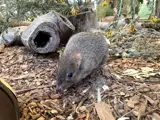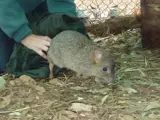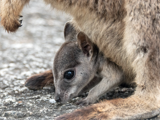Kanyana limits human contact with its woylies to ensure that our animals retain the survival instincts required to thrive back in the wild. Significant time and effort goes into ‘enrichment’ of the woylie enclosures at Kanyana, and recently we were commended by the national Zoo and Aquarium Association for our ‘enrichment’ programs.
Enrichment was particularly important to the Tutanning woylies. Tutanning is a small reserve east of Pingelly in the south-west and its woylies have a distinct genetic identity. When the population crashed by over 95% in 2009/2010, DEC moved the remaining animals to Perth Zoo creating a colony that would be released into the Perup Sanctuary near Manjimup, then under construction. The Perth Zoo received four female and three male woylies, but unfortunately there was no breeding success at the Zoo over the following three years.
An attempt was made to relocate the Zoo’s woylies to Dryandra, but that experiment only lasted a week. The larger male killed two smaller males and DEC (now called DPaW) immediately trapped the remaining four females and one male and brought them to Kanyana. DPaW also conducted another trapping program at Tutanning that resulted in Kanyana receiving a small, young female.
The current population at Kanyana consisted of five females and one male from Tutanning for breeding purposes. Two of the females were older and hadn't been bred in years, so it was uncertain whether they could breed again. To improve the genetic diversity of Kanyana’s Tutanning woylies, DPaW transferred the remaining male Perth Zoo woylie, named Brian, up to Lesmurdie. After this transfer, the colony at Kanyana then consisted of five females and two males.
Efforts were made to enrich the woylies' environment, limit human contact, and closely observe the colony, which resulted in immediate and sustained breeding success. The use of infrared cameras allowed carers to record behaviours without disturbing the woylies' nighttime activities.




